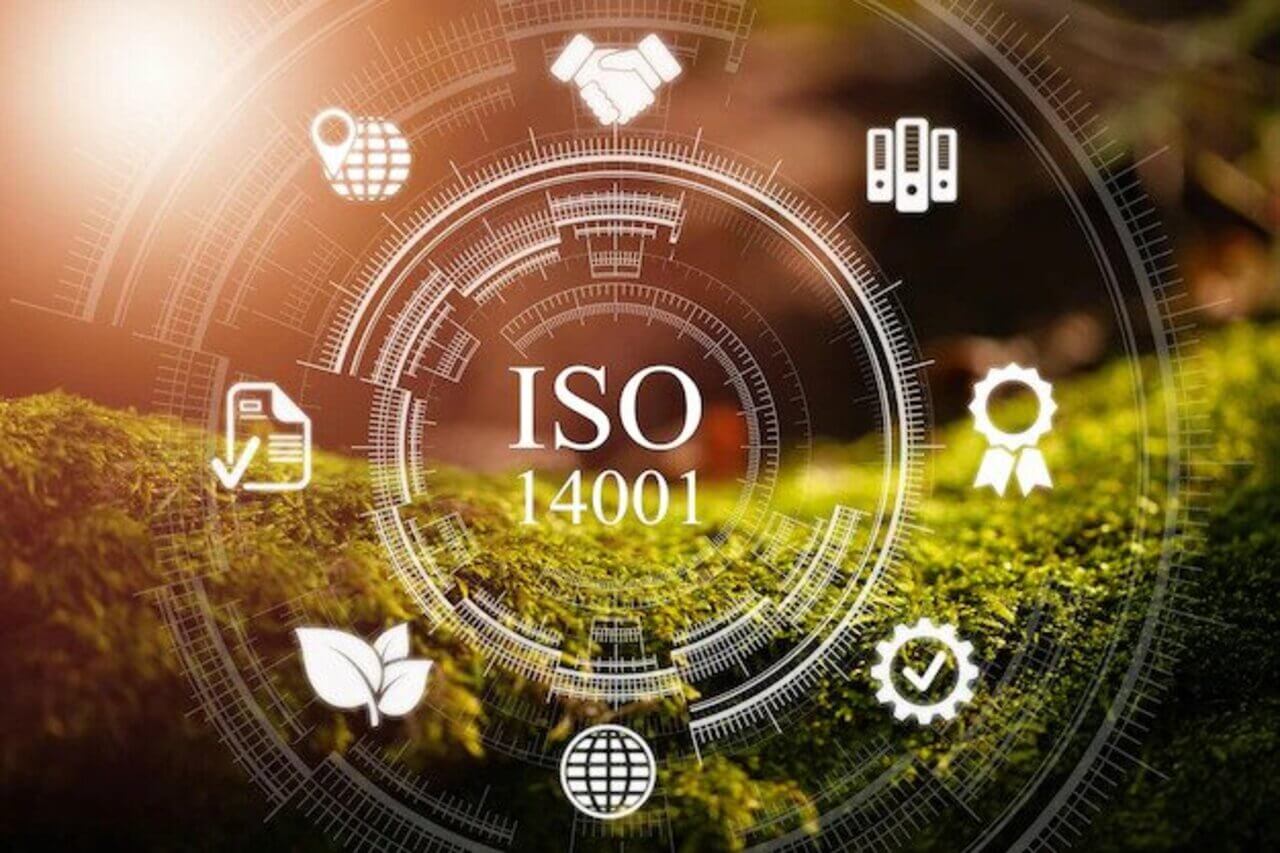Bubble Tea Malaysia and ISO 22000: Delivering Excellence Introduction ISO 22000 is a standard that will be applied by service providers who …
ISO 14001 Environmental Management System:
6 Benefits of ISO 14001 Certification in Malaysia
As ISO 14001 environmental management system is the global standard for environmental management and sustainable business practices, it’s a must-have certification for any company that wants to stay in the green. While we’re talking about your company’s green initiatives, it’s worth mentioning that having an ISO 14001 Certification means your company is considered a leader in the industry among its peers.
Having an ISO 14001 Certification in Malaysia will not just protect our environment, but your company will also gain many crucial benefits of environmental sustainability.
To help you obtain the certification, this article lists everything you need to know about ISO 14001 standard.
Here are the topic outlines:

What is ISO 14001 Malaysia?
The ISO 14001 certification requires businesses to establish, implement, and maintain an environmental management system (EMS) that complies with applicable environmental and safety standards.
Generally, it is a widely used certification across many industries in Malaysia, including manufacturing, construction, service, and retail.
Top 6 Business Benefits Of ISO 14001 Certification in Malaysia
As you know, implementing EMS is a great way to demonstrate your commitment to sustainability. Here are a few of the benefits you can expect from having a certification of ISO 14001 Malaysia.
1. Improvements in Waste Control
2. Save Costs
One of the great benefits of getting an ISO 14001 certification in Malaysia is that it will help you save costs in two areas.
The first one is the cost of wasted resources such as energy, paper, and water consumption. Then the next one is the legal and insurance costs that are incurred by the environmental incidents.
3. Increase Sales and Market Share
Basically, having ISO 14001 Malaysia means that your organization is committed to improving the environment and reducing environmental impact. It will help your organization build a stronger corporate image among regulators, customers and the public.
On top of that, it’s also a great form of business-building. Recent research has found that more than a third of global consumers are more likely to buy from a brand with an extensive sustainability commitment. As a result, companies with strong environmental commitment are more likely to gain market share and achieve business success.
4. Comply With Environmental Regulations
One of the best benefits of obtaining ISO certification in Malaysia is to help you identify, monitor and comply with the various environmental requirements relevant to your business and processes.
Of course, an environmental management system can also help you maintain your organization’s reputation and compliance with legislation, regulatory and contractual requirements.
5. Reduce Staff Turnover
Generally, employees prefer to work in an organization that shows concern for the environment and sustainability. Following the ISO 14001 standard will increase their engagement and involvement in the business. It should be noted that higher engagement results in better morale and lower employee turnover.
6. Minimize Business Risk
ISO 14001 helps businesses identify and manage possible environmental risks, and prevent interruption of business operations caused by environmental incidents, breaches of legislation, and foreseeable emergencies.
7 Key Requirements of ISO 14001 Certification
The ISO 14001 standard requires that an organization put in place a series of practices and procedures to implement an environmental management system. The major requirements of an EMS under ISO 14001 Certification include:
1. Set a policy statement
You need to set an environmental policy statement that describes your organization’s commitments. These include the nature, scale, and environmental impacts of your organization’s activities, products, and services.
Besides, it also helps your organization commits to the protection of the environment including prevention of pollution, continual improvement in overall environmental performance, and compliance with all applicable regulatory requirements.
2. Identify and evaluate environmental aspects
Identifying and evaluating all environmental aspects of your business is to help you to focus on and manage the environmental aspects that bring significant impacts to your business.
In evaluating the significance of the environmental aspects, you should consider a few criteria:
- Potential risks to harm the environment.
- The severity and occurrence of the aspect.
- Type and size of your organization.
- Importance to the stakeholders of your organization
3. Set environmental objectives and plans
Set clear environmental objectives and plans for achieving those objectives for your EMS. More importantly, you must ensure that they are consistent with the environmental policy. Having objectives and plans will provide a clear direction to all employees in the organization to work toward the environmental goals.
4. Implement the Environmental Management System
You need to conduct various activities to implement your EMS so that you will meet the objectives you set. They include staff training, establishing operational instructions and practices, and setting the actual metrics of what to measure and how to measure.
Once your EMS is built and documented, everyone in your organization will follow the practices and procedures, collect records and make improvements to your business.
5. Conduct internal ISO audits
You need to conduct internal audits to periodically check the performance, assess the conformity, evaluate the effectiveness of your EMS, and identify opportunities for improvement. It will help you correct your EMS. On top of that, it will also ensure your company meets the requirements of ISO 14001 Certification and ready for external audit.
6. Take corrective actions for non-conformities
Document any non-conformities in your business operations and processes. It includes periodically evaluating your company’s compliance with applicable regulatory requirements.
Also, take corrective and preventive actions to tackle the root cause and improve your business operations.
7. Undertake Management Reviews
Top management should periodically review the EMS to ensure its continuing suitability, adequacy and effectiveness.
The Process of Getting ISO 14001 Certification

If you’re ready to get your business up-to-speed with sustainability, you need to undergo a certification process for ISO 14001. It is broken down into three distinct stages – development, audit, and entry.
Your company will need to create an environmental management system during the development stage. First of all, you need to develop a plan for how you’ll implement the system. This will involve assessing your current operations and identifying the areas where you’ll need to make changes. Next, you’ll have to document the changes you’ve made.
At this stage, an auditor will review your implementation plan and trace your implementation, testing the validity of your procedures against the requirements of the ISO 14001 standard.
If the auditor determines that your implementation plan is valid, they will then sign off on your environmental management system, officially certifying it. Once you’ve passed your audit, you’ll be ready to move to the next phase of the process.
You’ll need to provide your environmental management system to an authorized body that verifies your system. The body will then rate your system and issue your ISO 14001 certificate.
After you’ve received your certificate, you’ll be ready to use it as proof that you’ve implemented an environmental management system that adheres to the requirements of the ISO 14001 standard.
Read also:How to Get ISO Certification Online in Malaysia
The Essentials of ISO Certification and Why It’s Necessary
5 Challenges You Might Encounter When Getting ISO 14001 Certification
3 Myths About ISO 14001
#1 Only manufacturers may be using ISO 14001.
ISO1 4001 is applicable to any organization/business. It is primarily used to understand the environmental legal requirements that are relevant to the organization and the way the organization interacts with the environment. Through ISO14001, an organization can monitor and control the output of its processes to improve its environmental impact. More over this will be a good marketing point as more and more consumers are placing importance on environmental protection in their spending behavior when choosing products or services from suppliers/ providers.
#2 If we are in compliance with the law, ISO 14001 is not necessary.
Even though it’s true that the implementation of an ISO 14001 environmental management system won’t standard consistency compliance with all environmental laws, it’s still important to be aware of and stay consistent with any changes to the relevant legal requirements if you want your system to operate effectively. But adhering to the ISO 14001 standard means more than just being aware of your legal compliance with environmental legislation. An EMS’s main goal is to help you improve your operations to reduce your environmental effect beyond what is needed by the relevant legislation.
#3 The ISO 14001 standard promotes the creation of several pointless documents.
The ISO 14001 standard only specifies a small number of required documents. Still, in order to manage and enhance this situation, you must be aware of how your processes interact with the environment. True, you must keep the records required to monitor, measure, and regulate your processes, but these depend on what your business decides is necessary.
2 Key Success Factors For Obtaining ISO 14001 Certification
To obtain ISO 14001 Certification, your organization must undergo a rigorous assessment such as noise monitoring, air & water emission testing, schedule waste management and etc. It usually takes a few months for a team of experts to complete.
The assessment begins with a series of interviews with organization executives and employees. This is to determine organization policies, goals, and strategies. The experts in the team interviews will also help evaluate how well the company is doing in achieving its goals.
Besides, the ISO 14001 certification requires an organization to show its environmental efforts are sustainable. That means you have to make sure that the efforts are consistent with its mission and achieve the desired outcome.
Since the standard is very comprehensive, it’s important to note that an ISO 14001 certification is not a single action – it’s an ongoing process that requires continuous effort.
To briefly conclude, by implementing the ISO 14001 Environmental Management System enables the company in Malaysia to get the certification easily and demonstrate its commitment to sustainability.
If your company isn’t practicing sustainable business practices, it’s time to get serious about it. It’s not only good for the environment — it’s good for your organization, too.

Is there any software for ISO 14001?
Yes, there is! Aizenz offers an ISO online package with different certifications including ISO 9001, ISO 45001, ISO 14001, etc. There are three options available for each certification package: the pro (most popular) package, the premium ISO package, and the basic ISO package.
The entire ISO certification application process is automated, and manpower & application fees are reduced substantially. It’s more efficient compared to the traditional way.
Learn more about ISO online package.
More resources
Quality in Motion: ISO 9001 Certification for Transportation Services Introduction Transportation services is a business that involves activities of transferring people, goods, …
Enhancing Safety in Petroleum Engineering With ISO 45001 Introduction Petroleum engineering is the job constantly exploring, extracting, and producing oil and gas …

